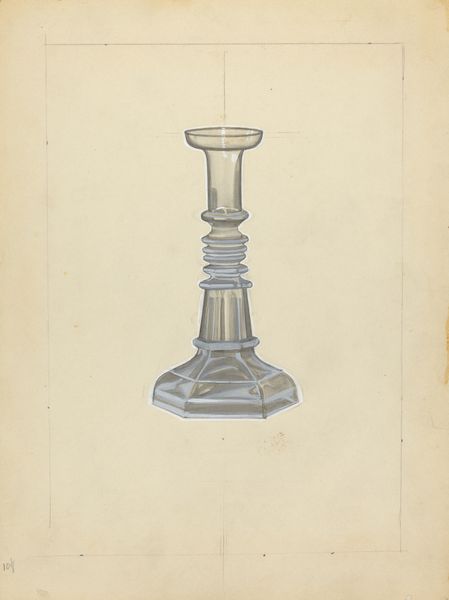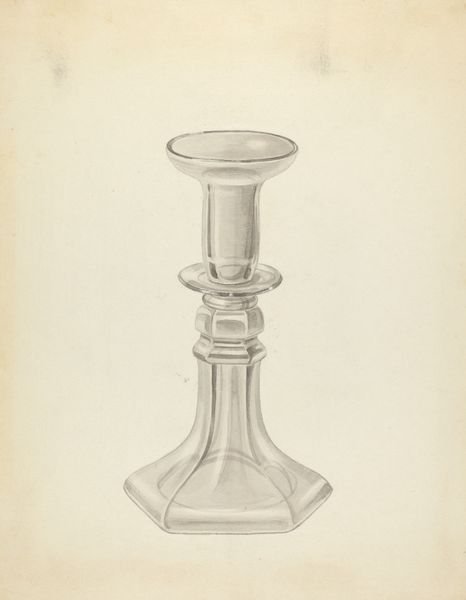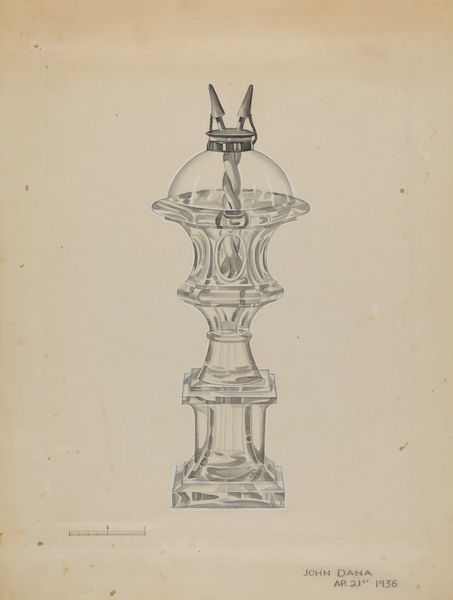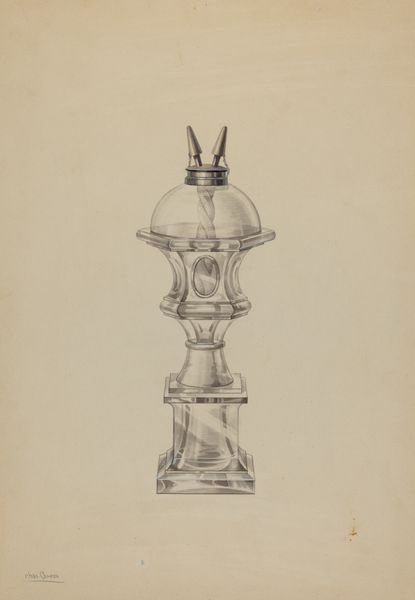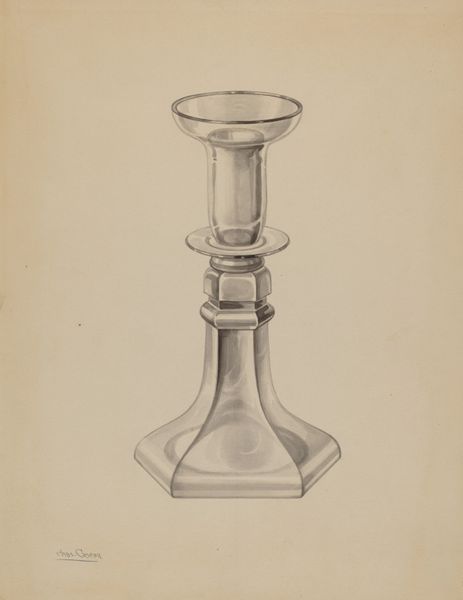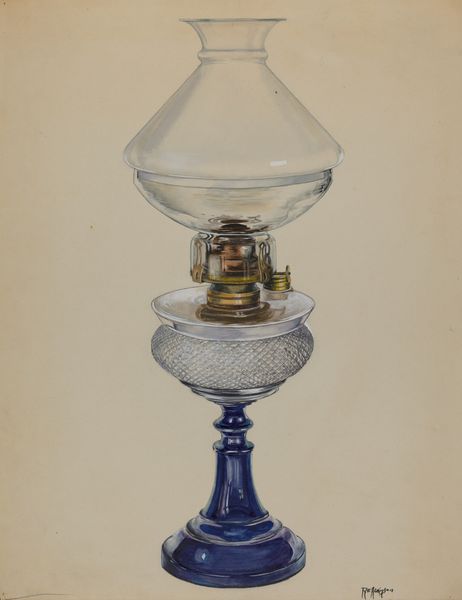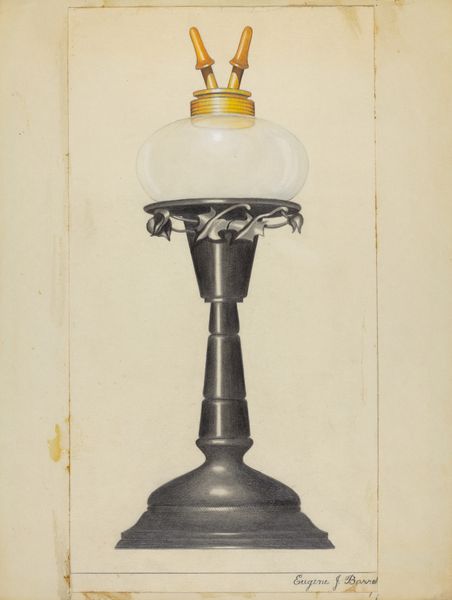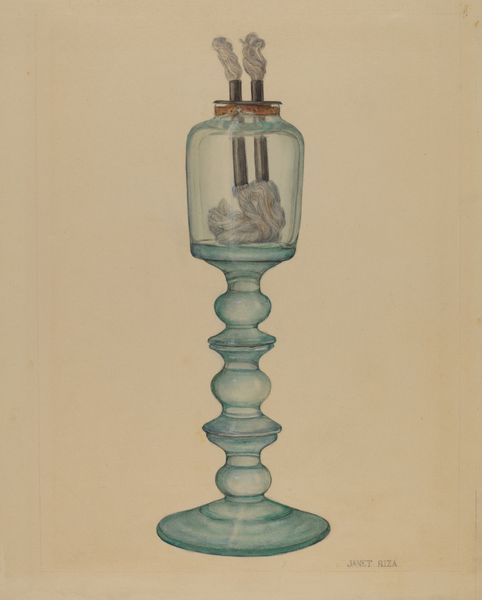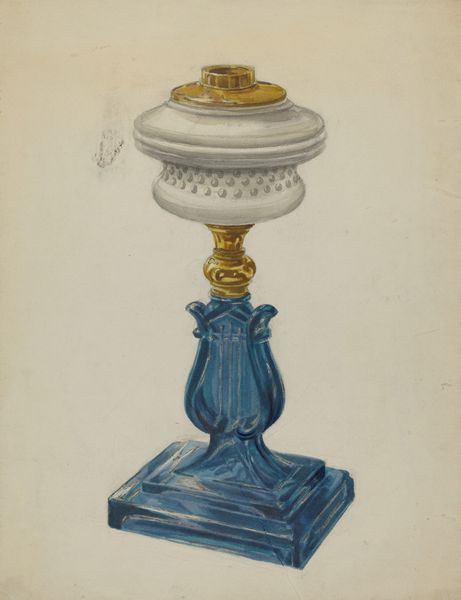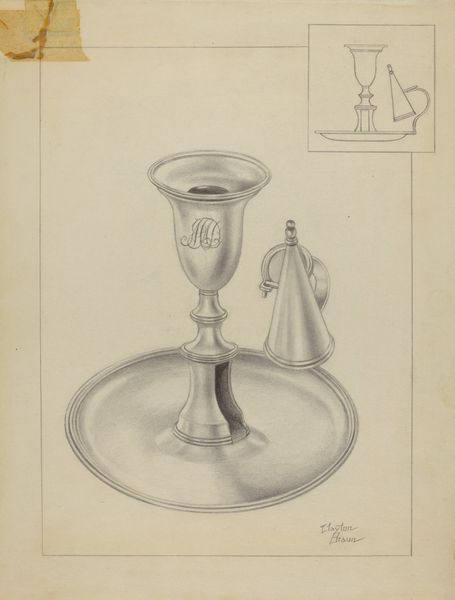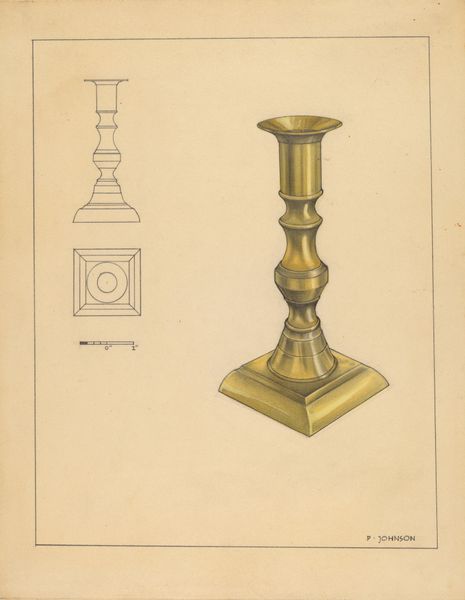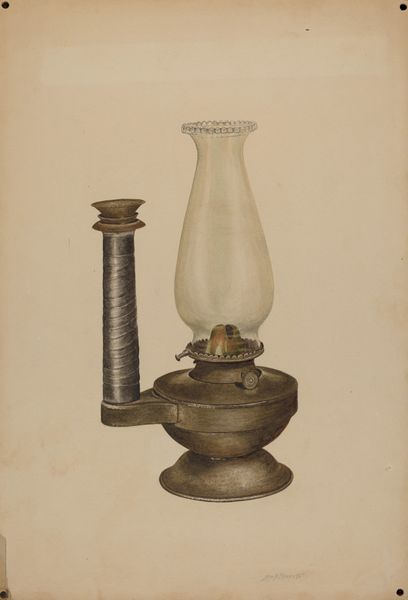
drawing, watercolor
#
drawing
#
charcoal drawing
#
watercolor
Dimensions: overall: 55.5 x 28 cm (21 7/8 x 11 in.) Original IAD Object: 14" high; 7 1/2" wide
Copyright: National Gallery of Art: CC0 1.0
Curator: The watercolor and charcoal work, "Pewter Caster" by J. Howard Iams, made in 1936, showcases a particular arrangement of bottles and a central carrying apparatus. My first thought? Sober elegance. Like a silent butler standing ready to dispense vinegar and oil. Editor: The caster feels incredibly mannered, doesn't it? Those perfectly positioned bottles and the handle, which has a certain almost heraldic quality to it with those fleur-de-lis cutouts. The glass refraction almost has a cathedral quality. Are we talking about the presentation of something rather more elevated than olive oil? Curator: I'd propose that the caster transcends pure utility. Note how Iams frames it? Set against a very neutral tone, there is a sort of theatrical spotlight on the reflective properties. The textures play out an almost dreamlike aesthetic. And consider that shape of the glass. Does that not suggest the sacred? Editor: Certainly, there’s an echo of reliquaries or chalices in those vessel shapes, yes. Especially those spires acting almost as lids. In domestic spaces, such careful arranging always spoke to order, to ritualized behavior, maybe even quiet assertions of power. "We have this much, and this is how we will use it.” Even in monochrome there is almost a sense of overflowing. It isn't just what the vessel holds but the possibilities of what they might offer too. Curator: Exactly! I sense a visual allegory, you see. The arrangement, the light… It elevates the mundane to the symbolic. Food becomes a sacrament! Everyday experience turns into a divine moment. Or it’s a commission to pay the bills in 1936. Depends where your bread’s buttered. Editor: True, though the dreamlike quality that I sense seems like a form of silent rebellion to me. After all, still life throughout history carries undercurrents about the vanity of earthly things... so perhaps it asks us to question, too, what’s truly valuable. Not simply the shine. Curator: Good point. Ultimately, the true beauty lies in these layers of meaning that keep unfurling, nearly a hundred years after it was drawn! Editor: An everyday item raised to the level of a cultural mirror, in every quiet gleam.
Comments
No comments
Be the first to comment and join the conversation on the ultimate creative platform.

